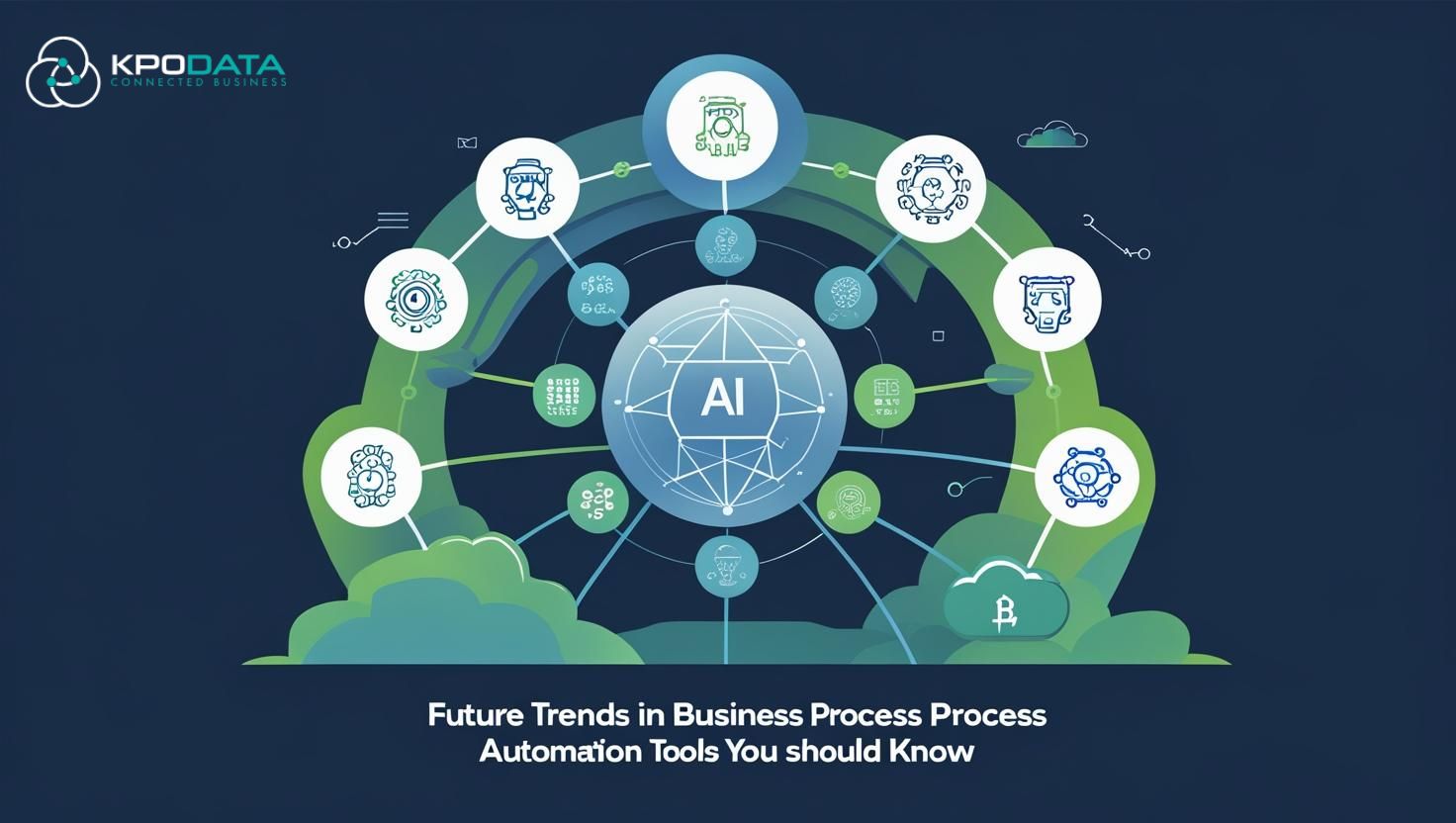Top 7 Low-Code Integration Platforms of 2025
Alan Hannigan
March 27, 2025


Founder and CEO with over 10 years of experience leading and growing multiple businesses in the technology services and SaaS space, delivering a variety of solutions for diverse clients in the tech, legal, media, and finance sectors across multiple markets worldwide.
I specialize in working with clients to understand their business needs, objectives, people, and culture, then implementing technology solutions that create meaningful change, deliver real value, and enable future growth. I have built a high-performing team of skilled engineers and fostered a culture of innovation and customer centricity. This has enabled us to stay ahead of the market and maintain a high client retention rate.
With experience across diverse industries and a strong track record of solving complex business challenges with technology, I bring deep expertise in business, finance, and project execution within organisations. As a strategic thinker with a pragmatic approach, I enjoy delivering results and overcoming obstacles through collaboration. I believe in the power of people and the importance of bringing them along on the journey to success.
KPO Data is a low-code application development platform that enables clients to build solutions that effectively solve business challenges without the complexity and cost of developing software from scratch, resulting in a higher ROI and faster delivery.
Low-code integration platforms are revolutionizing digital transformation by connecting apps, systems, and data with minimal coding. These tools replace complex scripts with visual workflows, enabling businesses to sync CRMs, automate tasks, and break down data silos swiftly.
What Is a Low-Code Integration Platform?
A low-code integration platform is a tool that helps businesses connect different software systems, apps, and data sources using visual workflows instead of traditional hand-coded scripts. Think of it as the glue that ties your CRM, ERP, marketing tools, and databases together without needing a team of developers writing thousands of lines of code. These platforms usually come with drag-and-drop interfaces, pre-built connectors, and automation features that make it way easier to integrate systems across departments or even across companies.
Instead of spending weeks building a custom API integration, teams can link apps like Salesforce, Slack, Shopify, and internal tools with just a few clicks. The platform takes care of the logic and background communication so your tools work in sync without hiccups. Whether it’s syncing customer data, automating reports, or streamlining backend operations, low-code integration platforms are all about speed, accessibility, and flexibility.
Low-Code Integration vs Low-Code Development
| Feature / Aspect | Low-Code Integration Platforms | Low-Code Development Platforms |
| Main Goal | Connect and sync apps, systems, and data | Build apps and software with minimal code |
| Primary Use | Automating workflows and data movement | Creating web, mobile, or internal business apps |
| Key Features | – Prebuilt connectors
– Visual workflows – Data mapping – Event triggers – API integration |
– Drag-and-drop UI builder
– Backend logic – Database support – User management – App deployment |
| Who Uses It | IT teams, operations, tech-savvy business users | Product teams, startups, internal devs, business units |
| Common Use Cases | – Sync leads between CRM and ads
– Trigger alerts across tools – Automate file handling or task routing |
– Build employee portals
– Launch customer-facing apps – Internal tools for data and operations |
| Examples | Zapier, Workato, MuleSoft Composer, Tray.io | OutSystems, Mendix, Microsoft Power Apps, Appian |
| Core Focus | Connecting and automating existing tools | Designing and launching new applications |
Why Use Low-Code Data Integration Platforms?
- Accelerated Development and Deployment: In today’s fast-moving market, speed matters. Low-code integration platforms slash deployment times from months to days or even hours using pre-built connectors and intuitive tools.
- Cost Efficiency: Traditional integrations often demand pricey developers or outsourcing. Low-code platforms cut those costs with affordable pricing, from subscriptions to usage-based fees, making robust solutions accessible, especially for small to medium size enterprises (SMEs).
- Empowering Non-Technical Users: These platforms empower non-technical staff, like analysts or marketers, to build integrations without IT hand-holding. This accessibility speeds up projects, boosts teamwork, and taps into the know-how of your broader workforce.
- Scalability and Flexibility: As your business grows, low-code integration platforms grow with you. They handle everything from basic connections to complex ecosystems and adapt to new tech, like AI or cloud services, keeping you agile in a changing landscape.
- Improved Data Accessibility and Decision-Making: Data silos are a persistent challenge for organizations, hindering insights and efficiency. Low-code integration platforms break down these barriers by unifying data from multiple sources in real time.
- Reduced Maintenance Burden: Traditional integrations often require ongoing maintenance to fix bugs, update APIs, or adapt to system changes. Low-code integration platforms simplify this process with automated updates, built-in error handling, and cloud-based management, freeing IT teams to focus on strategic priorities rather than routine upkeep.
- Future-Proofing Operations: With AI, IoT, and hybrid clouds on the rise in 2025, low-code platforms keep you ahead. They connect today’s tools and support tomorrow’s trends, like hyperautomation, ensuring your operations stay cutting-edge with the market.
Top Low-Code Integration Platforms of 2025
In 2025, low-code integration platforms are redefining how businesses connect systems, automate workflows, and accelerate digital transformation. These platforms blend intuitive, visual development with powerful integration capabilities, making them indispensable for organizations of all sizes.
1. OutSystems

OutSystems continues to dominate the low-code landscape in 2025, renowned for its full-stack development environment and exceptional integration prowess. By combining AI-driven automation with a robust framework, OutSystems empowers enterprises to connect legacy systems with modern applications seamlessly, solidifying its position as one of the best low-code integration platforms.
- Key Features:
- Pre-built connectors for Salesforce, SAP, AWS, Oracle, and over 400 other systems.
- Visual API builder for designing, testing, and deploying custom integrations.
- Event-driven architecture for real-time data synchronization.
- Scalable cloud infrastructure to support enterprise-grade workloads.
- Strengths:
- Excels at bridging legacy systems with cutting-edge cloud applications—a critical need as enterprises modernize in 2025.
- The Data Fabric feature aggregates data from disparate sources into a unified view, reducing silos and boosting analytics.
- AI-powered workflow suggestions streamline integration development, cutting time and effort.
- Pricing:
- OutSystems offers a tiered pricing model tailored to business size and needs:
- Free Plan: Personal edition suitable for individual use.
- Business Plan: Starts at $32,500 per year.
- Large App Portfolio: Custom pricing based on enterprise needs.
- Contact OutSystems for a detailed quote based on your requirements.
- OutSystems offers a tiered pricing model tailored to business size and needs:
- Ideal Use Case: Large organizations needing to integrate complex, mission-critical systems while developing custom applications.
- Website: OutSystems
2. Microsoft Power Apps

Microsoft Power Apps, a cornerstone of the Power Platform, has matured into a low-code integration juggernaut. Leveraging Microsoft’s vast ecosystem, it offers unmatched connectivity with Microsoft 365, Azure, Dynamics 365, and a plethora of third-party services, making it a versatile choice for businesses of all sizes.
- Key Features:
- Over 500 pre-built connectors, including Salesforce, Dropbox, Slack, and Google Workspace.
- Intuitive drag-and-drop interface for designing integrations and workflows.
- Seamless integration with Power Automate for advanced process automation.
- AI Builder to embed machine learning and intelligent features into integrations.
- Strengths:
- Deep integration with Microsoft’s cloud infrastructure ensures reliability and scalability.
- Citizen developers can connect apps and automate tasks without coding expertise, democratizing integration.
- Affordable entry-level pricing broadens its appeal to small and medium-sized businesses.
- Pricing:
- Per App Plan: $5 per user/month, allowing access to two apps and one portal.
- Per User Plan: $20 per user/month for unlimited apps.
- Free trial available with a Microsoft 365 subscription.
- Ideal Use Case: Businesses entrenched in Microsoft ecosystems seeking to integrate internal tools with external SaaS platforms.
- Website: Microsoft Power Apps
3. Appian

Appian remains a low-code pioneer, excelling in process automation and integration. Designed to unify data, systems, and workflows, Appian is a top-tier choice among low-code integration platforms, particularly for industries requiring stringent compliance and real-time insights.
- Key Features:
- Pre-built integrations with SAP, AWS, Salesforce, and a flexible API for custom connections.
- Data Fabric technology for real-time data convergence from multiple sources.
- Robust case management tools to monitor and optimize integration processes.
- Drag-and-drop interface for building workflows and integrations effortlessly.
- Strengths:
- Superior real-time analytics and reporting capabilities enhance decision-making.
- Strong automation features streamline repetitive tasks across connected systems.
- Enterprise-grade security ensures compliance with GDPR, HIPAA, and SOC standards.
- Pricing:
- Free Plan: Limited features suitable for small applications.
- Application Plan: $75 per user/month.
- Platform and Unlimited Plans: Custom pricing tailored to organizational requirements.
- Free 30-day trial available.
- Ideal Use Case: Organizations in healthcare, finance, or government needing end-to-end process automation alongside system integration.
- Website: Appian
4. Mendix

Mendix, now under Siemens’ umbrella, thrives as a low-code integration platform favored by developers and enterprises. Its model-driven approach, combined with collaboration tools and cloud-native support, makes it a strong contender for agile teams.
- Key Features:
- Extensive integration catalog with REST/GraphQL APIs and connectors for AWS, Google Cloud, and SAP.
- Visual development environment for rapid integration design.
- Built-in collaboration tools for distributed agile teams.
- Support for microservices and containerization (e.g., Kubernetes).
- Strengths:
- Perfect for rapid prototyping and deployment in agile development cycles.
- Seamless integration with cloud-native architectures enhances scalability.
- Offers flexibility to extend functionality with custom code when needed.
- Pricing:
- Free Plan: Basic features for small projects.
- Basic Plan: Starting from €52.5/month.
- Standard Plan: Starting from €900/month.
- Premium Plan: Custom pricing for extensive enterprise needs.
- Ideal Use Case: Tech-savvy teams building scalable, cloud-based applications with complex integrations.
- Website: Mendix
5. Zoho Creator

Zoho Creator shines as a low-code integration platform tailored for small to mid-sized businesses. Integrated into the Zoho ecosystem, it delivers a user-friendly experience with robust integration options at a budget-friendly price point.
- Key Features:
- Native integrations with Zoho apps (CRM, Books, etc.) and third-party tools like Google Sheets and QuickBooks.
- Drag-and-drop workflow builder for connecting systems effortlessly.
- Cross-platform app deployment for web, iOS, and Android.
- Built-in analytics for monitoring integration performance.
- Strengths:
- Simple yet effective for automating business processes and integrating SaaS tools.
- Strong mobile app development capabilities complement its integration focus.
- Usage-based pricing appeals to cost-conscious organizations.
- Pricing:
- Standard Plan: $8 per user/month.
- Professional Plan: $20 per user/month.
- Enterprise Plan: $25 per user/month.
- Ideal Use Case: SMBs aiming to digitize workflows and integrate popular business tools affordably.
- Website: Zoho Creator
6. UI Bakery

UI Bakery has emerged as a low-code integration platform specializing in internal tools and dashboards. Its simplicity, customization options, and developer-friendly features make it a hidden gem in the market.
- Key Features:
- Connectors for SQL/NoSQL databases, REST APIs, and services like AWS S3 and Google BigQuery.
- Drag-and-drop interface with over 75 pre-made components for rapid development.
- Git version control for team collaboration and deployment.
- Workflow automation via webhooks and scheduled jobs.
- Strengths:
- Fast setup for internal tools with real-time data integration.
- AI-driven features enhance application intelligence and usability.
- Affordable pricing broadens its appeal to startups and mid-sized teams.
- Pricing:
- Free Plan: $0/month per user.
- Standard Plan: $6/month per user or $12/month per developer.
- Business Plan: $12/month per user or $50/month per developer.
- Enterprise Plan: Custom pricing based on organizational needs.
- Ideal Use Case: Teams needing custom dashboards or internal apps with seamless data integration.
- Website: UI Bakery
7. Appsmith

Appsmith, an open-source low-code platform, has matured into a top choice for developers building enterprise-grade integrations. Its flexibility, cost-effectiveness, and community-driven development make it a rising star.
- Key Features:
- 18+ native integrations (e.g., MongoDB, PostgreSQL, REST/GraphQL APIs).
- Built-in JavaScript editor for advanced customization.
- Git-based version control for streamlined deployment.
- AI assistance for connecting large language models (LLMs) and databases.
- Strengths:
- Open-source model eliminates vendor lock-in and reduces costs.
- Rapid development of internal tools like admin panels and dashboards.
- Competitive usage-based pricing appeals to budget-conscious teams.
- Pricing:
- Community Edition: Free and self-hosted with core features.
- Cloud Plan: Approximately $20/month for light usage.
- Business Plan: $250/month for 10 users, offering unlimited apps and premium support.
- Ideal Use Case: Developer teams seeking a flexible, open-source platform for integrating internal systems.
- Website: Appsmith
How to Implement Low-Code Integration in Your Business

Boost your business with Kpodata’s low-code solutions, integrating HRMS, CRM, finance, and payroll up to 10x faster than traditional methods.
Using visual tools and pre-built components, Kpodata delivers tailored, cloud-based applications customized to your needs whether it’s ergonomics, financial systems, or climate accounting. Enjoy scalable, eco-friendly solutions (we plant trees per $100 spent!) with full support.
Contact us for a free demo and start transforming your operations today!






